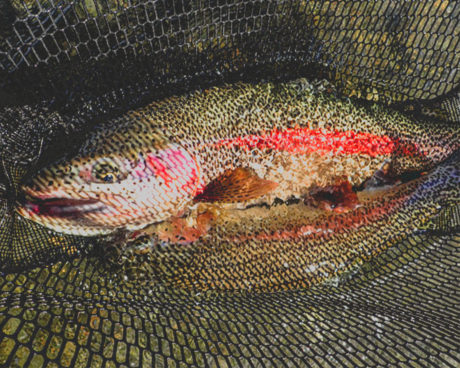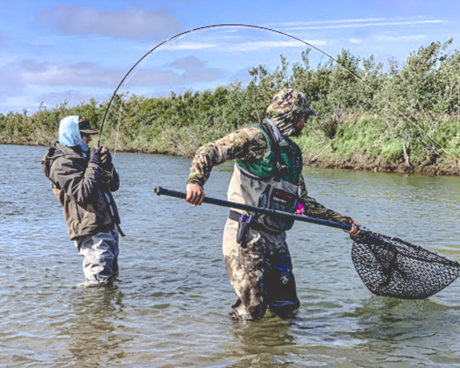
Landing nets just don’t get the deep thoughts and contemplation that may be given to other parts of a fisher person’s arsenal. That’s unfortunate since you are using that net to either catch and release or catch and harvest fish, and both of those activities should be done with the utmost care and forethought.
If you are doing any catch and release, first consider the possibility of not using a net at all. Yes, you will probably lose more fish before actually putting your hands on them if you go sans net, but you’re practicing catch and release right? As anglers become more proficient I think most can handle landing and releasing many species without a net. It does take practice and having someone along that knows how to land fish safely without a net would be a great first step at getting that practice. If you need a photo prior to release, then yes, a net makes that whole process a lot easier for you and safer for the fish.
Of course, certain situations pretty much make it necessary to have and use a landing net. Fishing from a boat while anchored or drifting, bank fishing large rivers, fishing a river that is not wadable, and targeting large fish are just a few good reasons to have your net game dialed in.

We highly recommend either full rubberized nets or dipped mesh nets for both catch and release and catch and harvest fishing. It is so much easier to deal with fish in rubberized nets than the old school mesh nets that still plague our waters today. Everything from taking the hook out, picking the fish up for photos, bleeding the fish, and even reviving them is easier in a true catch and release style net. These nets are generally not deep and when held in the water make a perfect basket for the fish to sit in until you either let it go or put it in your cooler. Also, hooks do not easily get stuck in the net, which just makes the fish less likely to get wrapped up in it before you take the hook out of the fish.
If you are harvesting fish, then a landing net is almost certainly needed for almost all situations. When the fishing is hot and you are bringing a lot of fish to shore quickly the net becomes obviously important. You can leave your last fish in the net while you bleed it out and get it on your stringer without the fish ever leaving the net, therefore you have little chance of losing that fish once he’s in your net. Just ask anyone who’s tried sockeye fishing without a net, it’s fun, but it almost always takes a lot longer to limit out. Also, with a good net and skilled netter more than one fish at a time can be in that bag. I have netted both silvers and reds while still having previous fish in the net bleeding out. Not really recommended, but in a pinch, you do what you have to do!

Negatives of most catch and release rubber nets are minimal and can be overcome with correct netting techniques. The rubber nets are heavy and they have quite a bit of drag in the water compared to the old mono nets. That being said, while netting fish the net should not be in the water until the moment you take your shot at scooping up the fish, never just leave the net in the water and force the angler to control the fish to you. Also, as the person netting you can’t just be chasing the fish all over trying to force the situation the whole time either. It’s a lot of give and take just like fighting a fish should be.
When purchasing a new net that hopefully has a nice rubber catch and release net on it consider a couple of other things. Try to find the toughest net you can. Any hoop that is solid or double-walled will surely last much longer, especially if you plan on actually putting fish in that net. Consider handle length, especially if using it from a boat you may want either a longer handle or the option to extend it. Extendable handles are great for durability, but add a lot of weight. Also, take a look at the yoke, the yoke is what connects the hoop and the handle together. Staying away from plastic yokes is generally a good rule of thumb. Probably one of the most important features of a good net is the ability to replace your net whenever necessary.
I’m sure we could go on about nets, but for now, we think enough “Deep Thought” has gone into this one. Any feedback from you guys is always appreciated though. Until next time tight lines and net’s full!
Leave a Reply